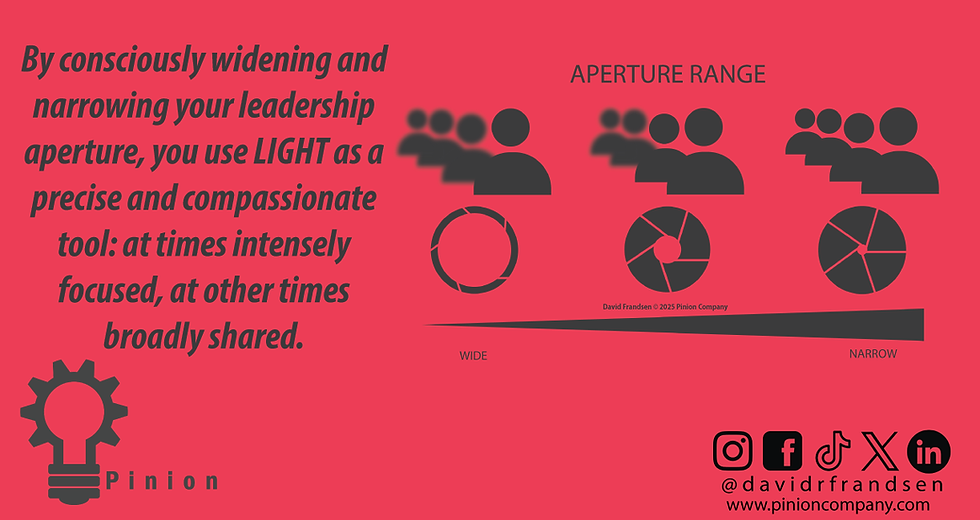Intent in Motion Soothes Emotion
- David Frandsen
- Sep 8
- 2 min read

As leaders—and as people—we all hit moments where we feel stuck, especially when things don’t go our way. I’ve found myself tangled in what’s commonly called analysis paralysis more times than I can count. The problem isn’t just thinking through a problem too hard; it’s that we get trapped in overthinking, spinning the same worries and doubts over and over until it feels impossible to move. This trap only pulls us deeper into that stuck place.
And sometimes, it isn’t just feeling stuck—it’s feeling down, or even slipping into a depression-like state. Those days when the weight of everything feels heavier than it should, when motivation plummets and the future looks cloudy. These are real experiences that complicate how we manage stress and anxiety. But here’s what I keep coming back to: the antidote often lies in action—intentional action.
When I push myself to take even small steps forward, breakthroughs start to appear. It’s not a magic cure, but there’s powerful science behind it. Our physiology and neurology rely on movement to help regulate our emotions. When we stay physically or mentally frozen in an emotional state, the negative loops in our head just echo louder and louder. Fear, self-loathing, and sadness become a melody stuck on repeat, pulling us deeper and deeper into that downward spiral.
There’s a crucial difference between honoring those down moments and letting them take over. The latter happens when we stay motionless, locked in a mental echo chamber of worry and despair. But when we respond to those feelings by getting intentional about action—even tiny action—it shifts our mental state. That "intent in motion," as I call it, soothes the emotions by breaking the cycle and restoring a sense of control.
I’ve also learned the hard way how much self-talk can undermine or uplift us. When I’m down, my internal dialogue often turns against me, becoming a harsh critic that fuels doubt and sinks my mood further. But I’ve started to catch myself and talk to myself as I would a friend in the same situation. What would I say to them? How would I encourage and support them? This shift changes everything—it turns self-sabotage into self-support, judgment into compassion, and stuckness into momentum.
In leadership and life, these truths matter deeply. It’s easy to forget that feeling down, anxious, or overwhelmed is part of the human experience, but letting those feelings immobilize us isn’t the answer. Taking purposeful steps forward—even small ones—allows us to regroup, recenter, and regain control over our emotions and actions.
So the next time you feel stuck or weighed down by anxiety or sadness, remember this simple truth: Intent in motion soothes emotion. Don’t wait for the perfect moment or a surge of motivation. Take a step. Then another. Talk kindly to yourself. The motion will carry you forward when your mind feels stuck, and that forward movement will help ease the emotional weight.
#GearUpForSuccess #GearUp #GearUpYourOrganization #LeadershipDevelopment #Leadership #LeadershipSkills #LeadershipTraining #ProfessionalDevelopment #LeadershipCoaching #PersonalGrowth #CareerDevelopment #LeadershipQuotes #LeadershipGoals #Coaching #Entrepreneurship #Mindset #Success #PersonalDevelopment #BusinessStrategy #ProfessionalGrowth #LeadershipMatters #LeadershipLessons #Empowerment




Comments